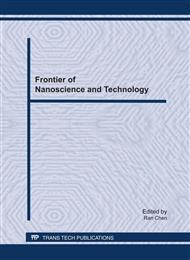p.430
p.435
p.440
p.449
p.456
p.461
p.466
p.471
p.479
Effect of Alumina Content on the Properties of Ceramic Foams Crystallized with Nano-Sized Mullite Crystals
Abstract:
Ceramic foam is a class of materials with high porosity and three-dimensional network of struts. In this study, ceramic foams were fabricated by polymeric sponge method using commercial PVA foam as a replica template. The study focused on the effect of alumina content on the physical and mechanical properties of such ceramic foams sintered at 1500°C for different sintering times. It was found that ceramic composition with higher amount of alumina required higher sintering temperature than that used in the present study. Physical properties and mechanical strengths depended upon ceramic composition as well as sintering time. Microstructural analysis revealed the evolution of primary cuboidal mullite and needle-like nano-sized mullite phase in the sintered sample. This fine needle-like phase added to mechanical strengths of ceramics.
Info:
Periodical:
Pages:
456-460
Citation:
Online since:
July 2011
Authors:
Keywords:
Price:
Сopyright:
© 2011 Trans Tech Publications Ltd. All Rights Reserved
Share:
Citation:


